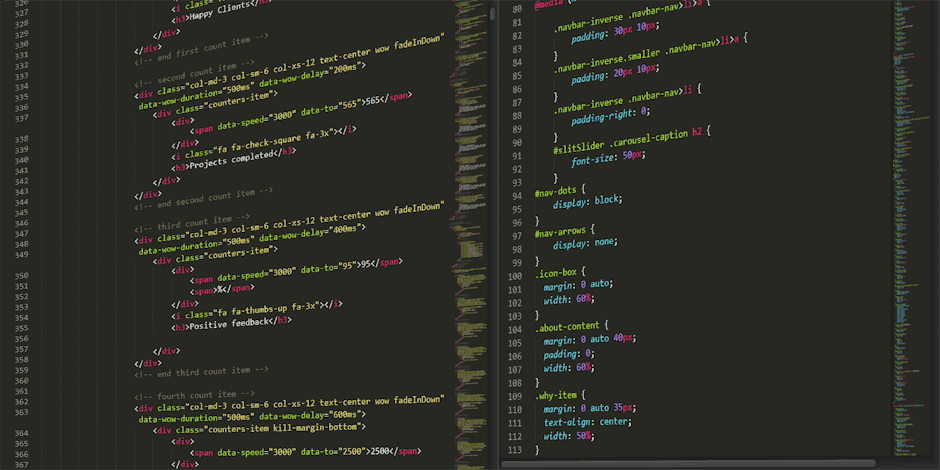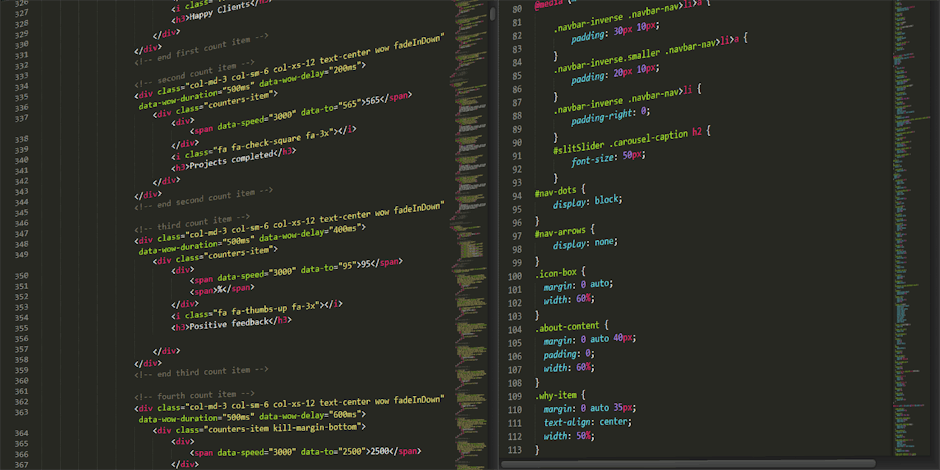Table of Contents
- Introduction
- Benefits of Continuous Feedback in the Workplace
- Strategies for Implementing Continuous Feedback
- Tools and Technologies for Continuous Feedback
- Overcoming Challenges in Implementing Continuous Feedback
- Creating a Culture of Continuous Feedback
- Measuring the Impact of Continuous Feedback
- Training and Development for Effective Feedback
- Case Studies of Successful Continuous Feedback Implementation
- Q&A
- Conclusion
“Empower your team with real-time feedback for continuous growth and success.”
Introduction
Implementing continuous feedback in the workplace is essential for fostering a culture of growth and improvement. By providing regular and timely feedback, employees can better understand their strengths and areas for development, leading to increased productivity and job satisfaction. In this article, we will explore the benefits of continuous feedback and provide tips for effectively implementing it in your organization.
Benefits of Continuous Feedback in the Workplace
Continuous feedback in the workplace is a powerful tool that can lead to improved performance, increased employee engagement, and a more positive work environment. By providing ongoing feedback to employees, managers can help them understand their strengths and areas for improvement, leading to better outcomes for both the individual and the organization as a whole.
One of the key benefits of continuous feedback is that it allows for timely and specific guidance. Instead of waiting for annual performance reviews, employees receive feedback on a regular basis, enabling them to make adjustments and improvements in real-time. This can help prevent small issues from escalating into larger problems and allows employees to stay on track with their goals and objectives.
Additionally, continuous feedback fosters a culture of open communication and transparency within the organization. When feedback is given regularly, employees feel more comfortable sharing their thoughts and ideas with their managers. This can lead to increased collaboration, innovation, and overall job satisfaction. Employees are more likely to feel valued and appreciated when they receive regular feedback, which can boost morale and motivation.
Another benefit of continuous feedback is that it can help identify and address performance issues early on. By providing ongoing feedback, managers can pinpoint areas where employees may be struggling and offer support and resources to help them improve. This proactive approach can prevent performance issues from becoming major obstacles and can ultimately lead to higher levels of productivity and job satisfaction.
Continuous feedback also promotes a growth mindset among employees. When feedback is given regularly, employees are more likely to view it as an opportunity for learning and development rather than criticism. This can help employees see challenges as opportunities for growth and improvement, leading to a more resilient and adaptable workforce.
Furthermore, continuous feedback can help build stronger relationships between managers and employees. When feedback is given regularly and in a constructive manner, employees are more likely to trust and respect their managers. This can lead to better communication, increased loyalty, and a more positive work environment overall.
In conclusion, implementing continuous feedback in the workplace can have numerous benefits for both employees and organizations. By providing timely and specific guidance, fostering open communication, identifying performance issues early on, promoting a growth mindset, and building stronger relationships, continuous feedback can lead to improved performance, increased employee engagement, and a more positive work environment. Organizations that prioritize continuous feedback are more likely to see higher levels of productivity, job satisfaction, and overall success.
Strategies for Implementing Continuous Feedback
Continuous feedback in the workplace is a crucial component of employee development and organizational success. Unlike traditional performance reviews that occur once or twice a year, continuous feedback involves providing ongoing, real-time feedback to employees on their performance, behavior, and goals. This approach allows for more frequent communication between managers and employees, leading to improved performance, increased engagement, and better overall outcomes.
Implementing continuous feedback in the workplace requires a strategic approach and a commitment from both managers and employees. One key strategy for implementing continuous feedback is to establish clear expectations and goals. By setting clear performance expectations and goals, employees know what is expected of them and can work towards achieving those goals. This clarity helps to guide feedback conversations and ensures that feedback is relevant and actionable.
Another important strategy for implementing continuous feedback is to create a culture of open communication and trust. Employees should feel comfortable sharing their thoughts, concerns, and ideas with their managers, and managers should be open to receiving feedback from their employees. This open communication fosters a culture of trust and collaboration, which is essential for effective feedback conversations.
In addition to setting clear expectations and fostering open communication, it is important to provide training and support for managers on how to give and receive feedback effectively. Many managers may not have experience or training in providing feedback, so it is important to provide them with the tools and resources they need to have productive feedback conversations with their employees. This training can include techniques for giving constructive feedback, active listening skills, and strategies for addressing performance issues.
Furthermore, it is important to incorporate feedback into regular performance discussions and check-ins. By integrating feedback into regular conversations, employees receive timely and relevant feedback on their performance, behavior, and goals. This ongoing feedback helps employees to stay on track, make adjustments as needed, and continue to grow and develop in their roles.
Another key strategy for implementing continuous feedback is to use technology to facilitate feedback conversations. There are a variety of tools and platforms available that can help streamline the feedback process, track progress towards goals, and provide a centralized location for feedback conversations. These tools can help to make feedback more accessible, efficient, and effective for both managers and employees.
Finally, it is important to recognize and celebrate successes and achievements. Positive feedback is just as important as constructive feedback, and recognizing employees for their hard work and accomplishments can help to boost morale, motivation, and engagement. By acknowledging and celebrating successes, employees feel valued and appreciated, which can lead to increased job satisfaction and performance.
In conclusion, implementing continuous feedback in the workplace is a valuable strategy for improving employee performance, engagement, and overall organizational success. By setting clear expectations, fostering open communication, providing training and support for managers, incorporating feedback into regular discussions, using technology to facilitate feedback conversations, and recognizing and celebrating successes, organizations can create a culture of continuous feedback that drives performance and growth. Continuous feedback is not just a one-time event, but an ongoing process that requires commitment, effort, and dedication from both managers and employees. By embracing continuous feedback, organizations can create a culture of continuous improvement and development that benefits everyone involved.
Tools and Technologies for Continuous Feedback

Continuous feedback is a crucial component of a successful workplace environment. It allows for ongoing communication between employees and managers, leading to improved performance, increased employee engagement, and ultimately, better business outcomes. In today’s fast-paced and ever-changing work environment, implementing tools and technologies for continuous feedback is essential to keep up with the demands of the modern workforce.
One of the most popular tools for continuous feedback in the workplace is performance management software. These platforms allow employees and managers to track progress, set goals, and provide feedback in real-time. By using performance management software, organizations can streamline the feedback process, making it easier for employees to receive and act on feedback quickly.
Another tool that is gaining popularity in the workplace is pulse surveys. Pulse surveys are short, frequent surveys that allow employees to provide feedback on various aspects of their work environment. These surveys can be used to gauge employee satisfaction, identify areas for improvement, and track progress over time. By implementing pulse surveys, organizations can gather valuable insights from employees and make data-driven decisions to improve the workplace.
360-degree feedback tools are also becoming increasingly popular in the workplace. These tools allow employees to receive feedback from multiple sources, including peers, managers, and direct reports. By providing a comprehensive view of an employee’s performance, 360-degree feedback tools can help employees identify strengths and areas for improvement, leading to personal and professional growth.
In addition to these tools, organizations can also leverage technology to facilitate continuous feedback in the workplace. For example, instant messaging platforms such as Slack or Microsoft Teams can be used to provide real-time feedback to employees. By using these platforms, managers can communicate with employees quickly and efficiently, ensuring that feedback is delivered in a timely manner.
Furthermore, video conferencing tools like Zoom or Google Meet can be used to conduct virtual feedback sessions with remote employees. These tools allow for face-to-face communication, making it easier for managers to provide feedback in a personal and meaningful way. By leveraging technology, organizations can overcome the challenges of remote work and ensure that all employees receive the feedback they need to succeed.
When implementing tools and technologies for continuous feedback in the workplace, it is important to consider the needs and preferences of employees. Some employees may prefer to receive feedback in person, while others may prefer to receive feedback electronically. By offering a variety of feedback options, organizations can ensure that all employees feel comfortable and supported in their feedback process.
In conclusion, implementing tools and technologies for continuous feedback in the workplace is essential for fostering a culture of open communication and continuous improvement. By leveraging performance management software, pulse surveys, 360-degree feedback tools, and technology platforms, organizations can create a feedback-rich environment that empowers employees to reach their full potential. By investing in continuous feedback, organizations can drive employee engagement, improve performance, and achieve long-term success in today’s competitive business landscape.
Overcoming Challenges in Implementing Continuous Feedback
Implementing continuous feedback in the workplace can be a powerful tool for improving employee performance, fostering growth, and enhancing overall productivity. However, like any new initiative, there are challenges that organizations may face when trying to establish a culture of ongoing feedback. In this article, we will explore some common obstacles that companies encounter when implementing continuous feedback and discuss strategies for overcoming them.
One of the main challenges in implementing continuous feedback is resistance from employees. Some individuals may be hesitant to receive feedback on a regular basis, fearing that it will be overly critical or demoralizing. To address this issue, it is essential for organizations to create a culture that values feedback as a tool for growth and development rather than as a form of punishment. Leaders should emphasize the importance of constructive feedback in helping employees reach their full potential and encourage open communication throughout the organization.
Another obstacle to implementing continuous feedback is a lack of training and resources. Providing employees with the skills and tools they need to give and receive feedback effectively is crucial for the success of any feedback program. Organizations should invest in training programs that teach employees how to deliver feedback in a constructive manner, how to receive feedback with an open mind, and how to use feedback to set goals and improve performance. Additionally, companies should provide employees with access to resources such as feedback templates, coaching sessions, and technology platforms that facilitate the feedback process.
One of the most significant challenges in implementing continuous feedback is the lack of a formal feedback structure. Without a clear framework for giving and receiving feedback, employees may feel unsure about how to approach the process or may not understand the purpose of feedback. To overcome this challenge, organizations should establish guidelines and protocols for providing feedback, including when and how feedback should be given, who should be involved in the feedback process, and how feedback should be documented and followed up on. By creating a structured feedback system, companies can ensure that feedback is consistent, meaningful, and actionable.
Another common challenge in implementing continuous feedback is a lack of accountability. In some cases, employees may receive feedback but fail to take action on it, leading to a lack of improvement in performance. To address this issue, organizations should hold employees accountable for implementing feedback by setting clear goals and expectations, providing regular check-ins and follow-ups, and recognizing and rewarding progress and achievements. By creating a culture of accountability around feedback, companies can ensure that feedback leads to real change and improvement.
In conclusion, implementing continuous feedback in the workplace can be a valuable tool for driving employee growth and performance. While there are challenges that organizations may face when trying to establish a culture of ongoing feedback, these obstacles can be overcome with the right strategies and resources. By addressing resistance, providing training and resources, establishing a formal feedback structure, and promoting accountability, companies can create a culture that values feedback as a catalyst for growth and success.
Creating a Culture of Continuous Feedback
In today’s fast-paced work environment, providing feedback to employees is crucial for their growth and development. Traditional annual performance reviews are no longer sufficient in helping employees improve their skills and performance. Instead, organizations are shifting towards a culture of continuous feedback, where employees receive regular input on their work and are able to make adjustments in real-time.
Implementing continuous feedback in the workplace requires a shift in mindset from both managers and employees. Managers need to be proactive in providing feedback, while employees need to be open to receiving it. This culture of feedback fosters open communication and transparency, leading to improved performance and job satisfaction.
One of the key benefits of continuous feedback is that it allows for timely interventions. Instead of waiting for an annual review to address performance issues, managers can provide feedback as soon as they notice a problem. This immediate feedback enables employees to make necessary adjustments and improve their performance before it becomes a bigger issue.
Furthermore, continuous feedback helps employees set clear goals and expectations. By receiving regular input on their work, employees can better understand what is expected of them and how they can improve. This clarity leads to increased motivation and engagement, as employees have a clear roadmap for success.
Another advantage of continuous feedback is that it promotes a culture of learning and development. When employees receive regular input on their work, they are able to identify areas for improvement and take proactive steps to enhance their skills. This continuous learning mindset not only benefits the individual employee but also contributes to the overall growth and success of the organization.
To successfully implement continuous feedback in the workplace, organizations need to provide training and resources to managers on how to deliver feedback effectively. Managers should be trained on how to give constructive feedback, set clear expectations, and provide support and guidance to employees. Additionally, organizations should invest in technology tools that facilitate feedback, such as performance management software or communication platforms.
It is also important for organizations to create a safe and supportive environment for feedback. Employees should feel comfortable receiving feedback and know that it is given with the intention of helping them grow and succeed. By fostering a culture of trust and openness, organizations can create a feedback-rich environment where employees feel empowered to take ownership of their development.
In conclusion, implementing continuous feedback in the workplace is essential for fostering a culture of growth and development. By providing regular input on performance, setting clear expectations, and promoting a learning mindset, organizations can empower employees to reach their full potential. With the right training, resources, and support, organizations can create a feedback-rich environment that drives performance and success.
Measuring the Impact of Continuous Feedback
Continuous feedback in the workplace has become increasingly popular as organizations strive to create a culture of ongoing improvement and development. This approach involves providing employees with regular feedback on their performance, rather than waiting for annual performance reviews. By implementing continuous feedback, organizations can address issues in real-time, recognize achievements promptly, and ultimately drive employee engagement and productivity.
One of the key benefits of continuous feedback is its impact on employee performance. Research has shown that employees who receive regular feedback are more likely to improve their performance compared to those who only receive feedback once a year. This is because continuous feedback allows employees to make adjustments and improvements in a timely manner, rather than waiting for an annual review to address issues that may have been ongoing for months.
In addition to improving performance, continuous feedback also has a positive impact on employee engagement. When employees receive regular feedback, they feel more valued and supported by their managers. This, in turn, leads to higher levels of engagement and motivation, as employees are more likely to be invested in their work when they feel that their efforts are being recognized and appreciated.
Furthermore, continuous feedback can help to foster a culture of open communication within an organization. By encouraging regular feedback between managers and employees, organizations can create an environment where feedback is seen as a normal and constructive part of the work process. This can lead to increased trust and collaboration among team members, as well as a greater willingness to give and receive feedback at all levels of the organization.
Measuring the impact of continuous feedback in the workplace is essential to understanding its effectiveness and making improvements where necessary. One way to measure the impact of continuous feedback is through employee surveys and feedback sessions. By gathering feedback from employees on their experiences with continuous feedback, organizations can identify areas for improvement and make adjustments to their feedback processes accordingly.
Another way to measure the impact of continuous feedback is through performance metrics. By tracking key performance indicators such as employee engagement, productivity, and retention rates, organizations can assess the impact of continuous feedback on their overall performance. If these metrics show improvement over time, it can be a strong indicator that continuous feedback is having a positive impact on the organization.
In conclusion, implementing continuous feedback in the workplace can have a significant impact on employee performance, engagement, and overall organizational success. By providing employees with regular feedback, organizations can address issues in real-time, recognize achievements promptly, and foster a culture of open communication and collaboration. Measuring the impact of continuous feedback is essential to understanding its effectiveness and making improvements where necessary. By gathering feedback from employees and tracking performance metrics, organizations can assess the impact of continuous feedback and make adjustments to their feedback processes to drive continuous improvement and success.
Training and Development for Effective Feedback
Feedback is an essential component of any successful workplace. It provides employees with valuable insights into their performance, helps them identify areas for improvement, and fosters a culture of continuous learning and growth. However, traditional feedback methods, such as annual performance reviews, are often ineffective and can lead to disengagement and frustration among employees. In order to create a more dynamic and effective feedback process, many organizations are turning to continuous feedback.
Continuous feedback is a process in which employees receive ongoing feedback from their managers, peers, and even customers. This real-time feedback allows employees to make immediate adjustments to their performance, rather than waiting for an annual review. By implementing continuous feedback in the workplace, organizations can create a more agile and responsive feedback system that promotes employee development and drives performance improvement.
One of the key benefits of continuous feedback is its ability to provide employees with timely and relevant feedback. Instead of waiting months for a performance review, employees can receive feedback on a regular basis, allowing them to address issues as they arise and make improvements in real-time. This immediate feedback loop helps employees stay on track and ensures that they are continuously working towards their goals.
In addition to providing timely feedback, continuous feedback also promotes a culture of open communication and transparency within the organization. By encouraging regular feedback exchanges between employees and their managers, organizations can create a more collaborative and supportive work environment. This open dialogue fosters trust and strengthens relationships between team members, leading to increased engagement and productivity.
Furthermore, continuous feedback allows organizations to identify and address performance issues more effectively. By collecting feedback on a regular basis, managers can quickly identify areas where employees may be struggling and provide the necessary support and resources to help them improve. This proactive approach to feedback not only helps employees develop their skills and capabilities but also ensures that the organization is able to address performance issues before they escalate.
Implementing continuous feedback in the workplace requires a shift in mindset and a commitment to ongoing communication and collaboration. Organizations must invest in training and development programs to help managers and employees understand the importance of continuous feedback and how to effectively deliver and receive feedback. By providing employees with the necessary tools and resources, organizations can create a culture of feedback that drives performance improvement and fosters employee development.
In conclusion, continuous feedback is a powerful tool for driving performance improvement and fostering employee development in the workplace. By implementing a dynamic and responsive feedback process, organizations can create a more agile and engaged workforce that is committed to continuous learning and growth. Through timely feedback, open communication, and proactive performance management, organizations can create a culture of feedback that empowers employees to reach their full potential and achieve their goals.
Case Studies of Successful Continuous Feedback Implementation
Continuous feedback is a crucial aspect of employee development and performance improvement in the workplace. By providing ongoing feedback, employees can receive timely guidance on their work, enabling them to make necessary adjustments and improvements. In this article, we will explore case studies of successful continuous feedback implementation in various organizations.
One such case study comes from a tech company that implemented a continuous feedback system through regular one-on-one meetings between managers and employees. These meetings were structured to provide a platform for open communication and feedback exchange. Employees were encouraged to share their achievements, challenges, and goals, while managers offered constructive feedback and guidance. This approach helped to foster a culture of transparency and accountability within the organization, leading to improved employee engagement and performance.
Another example of successful continuous feedback implementation comes from a retail company that utilized a digital feedback tool to collect real-time feedback from employees. This tool allowed employees to provide feedback on their work, their colleagues, and the overall work environment. Managers were able to review this feedback and provide timely responses and support to address any issues or concerns raised. This approach not only improved communication and collaboration within the organization but also helped to identify and address potential issues before they escalated.
In a healthcare setting, a hospital implemented a continuous feedback system through regular performance reviews and feedback sessions. These sessions were designed to provide employees with a comprehensive overview of their performance, strengths, and areas for improvement. Managers worked closely with employees to set goals and create development plans to support their growth and success. This approach not only improved employee morale and job satisfaction but also led to better patient outcomes and overall organizational performance.
In the education sector, a school district implemented a continuous feedback system through regular classroom observations and feedback sessions. Teachers received feedback on their teaching practices, student engagement, and classroom management techniques. This feedback was used to identify areas for improvement and provide targeted support and professional development opportunities. As a result, teacher performance and student outcomes improved significantly, leading to a more effective and successful learning environment.
Overall, these case studies highlight the importance of continuous feedback in driving employee development and performance improvement in the workplace. By implementing a structured feedback system, organizations can create a culture of open communication, collaboration, and continuous learning. This, in turn, leads to improved employee engagement, job satisfaction, and overall organizational success.
In conclusion, continuous feedback is a powerful tool for driving employee development and performance improvement in the workplace. By implementing a structured feedback system, organizations can create a culture of transparency, accountability, and continuous learning. The case studies discussed in this article demonstrate the positive impact of continuous feedback on employee engagement, performance, and organizational success. It is clear that continuous feedback is essential for creating a high-performing and successful workplace.
Q&A
1. What is continuous feedback in the workplace?
Continuous feedback in the workplace is an ongoing process of providing and receiving feedback on performance, goals, and development.
2. Why is continuous feedback important in the workplace?
Continuous feedback helps employees improve their performance, stay engaged, and develop their skills.
3. How can continuous feedback be implemented in the workplace?
Continuous feedback can be implemented through regular one-on-one meetings, real-time feedback tools, and performance reviews.
4. What are the benefits of implementing continuous feedback in the workplace?
The benefits of implementing continuous feedback in the workplace include increased employee engagement, improved performance, and better communication.
5. How can managers effectively deliver continuous feedback?
Managers can effectively deliver continuous feedback by being specific, timely, and constructive in their feedback.
6. How can employees receive and act on continuous feedback?
Employees can receive and act on continuous feedback by actively listening, asking for clarification, and setting goals for improvement.
7. What are some challenges of implementing continuous feedback in the workplace?
Some challenges of implementing continuous feedback in the workplace include resistance to change, lack of training, and cultural barriers.
8. How can organizations create a culture of continuous feedback?
Organizations can create a culture of continuous feedback by promoting open communication, providing training on giving and receiving feedback, and recognizing and rewarding feedback.
Conclusion
Implementing continuous feedback in the workplace can lead to improved communication, increased employee engagement, and better overall performance. By providing regular feedback, employees can receive timely guidance on their work and have the opportunity to make necessary adjustments. This can ultimately lead to a more productive and successful work environment.





